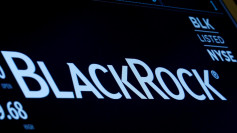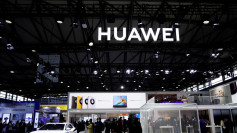This year, NVIDIA has been a standout star among U.S. stocks, with an increase of nearly 200% so far. The surge has added $640 billion to the company's market value, equivalent to the combined worth of America's two largest banks - JPMorgan Chase and Bank of America.
Amid such outstanding performance, the question remains: Can NVIDIA still grow?
On June 15, as NVIDIA hit record highs, Bank of America analyst Vivek Arya reaffirmed his buy rating on the tech company in a new report. He predicted that NVIDIA's market share in gaming and artificial intelligence (AI) sectors will continue to grow, solidifying its position as a semiconductor industry leader.
Arya was particularly optimistic about NVIDIA's upcoming new graphics card and its recently released games. He believed that with the introduction of NVIDIA's new graphics card, market share would further increase to 76.4%. Market adoption is anticipated to speed up for the upcoming RTX 4060, the new card in NVIDIA's popular '60 series' primarily aimed at mainstream and enthusiastic gamers.
In a previous Bank of America report, NVIDIA was lauded as the "Shovel King of the AI Gold Rush," citing the idea that shovel sellers often profited more than the actual gold miners during the 1850s gold rush.
The report contended that NVIDIA was in a favorable position to profit from the intensifying AI competition between Microsoft and Google, regardless of which company ultimately comes out on top. The potential total market value of these chips could grow to $60 billion by 2027, and NVIDIA currently holds approximately 75% market share.
Bank of America stated that NVIDIA's potential in the gaming field and its leadership in AI computational power will gradually become the top choice for major companies. Meanwhile, the bank gave a neutral rating to NVIDIA's competitor AMD; and a negative rating for Intel, predicting that Intel would continue to lose market share.
So how challenging is it to take on NVIDIA? Analyst Patrick Moorhead from Moor Insights & Strategy wrote that in this round of the chip war revolving around AI, "NVIDIA is clear and free." No one wants an industry with just one dominant player, but at present, the booming market for generative AI chips belongs only to NVIDIA.
Earlier this week, AMD released its AI GPU MI300X chip, considered as an attempt to catch up with NVIDIA. Despite claims that their chip would surpass NVIDIA's flagship product H100 on multiple metrics, AMD did not reveal whether the chip already has potential customers, stating that it will only start increasing new chip production in the last quarter of this year.
Analyst Stacy Rasgon from Bernstein indicated that by the time AMD's new chips are widely available in the first half of next year, NVIDIA's H100 will have been on the market for 18 months, significantly ahead. AMD is "far behind".
Founder of Radio Free Mobile and former Nomura Securities analyst, Richard Windsor, pointed out that so far, NVIDIA has secured about 85% of the market share in AI chips. AMD may be "one of the most important challengers so far," but the question is "how many developers really want to use it."
There are some analysts who believe that NVIDIA's price, which has risen by 190% in just half a year, is too high and unreasonable. Known as the "Father of Valuation," NYU finance professor Aswath Damodaran believes that while NVIDIA's rise this year is reasonable, the current stock price of around $415 is not.
Cathie Wood, also known as "Wood Sister," tweeted that NVIDIA's current pricing is too high. Her flagship product, ARK Innovation ETF, had divested from NVIDIA stocks as early as January.
Indeed, looking at the valuation, since NVIDIA released better-than-expected earnings reports, its valuation has become increasingly extreme. The latest data shows its P/E ratio has exceeded 200, while the average level for U.S. chip companies is around 31, and other tech giants' P/E ratios are also around 30 times.
Compared to revenue, NVIDIA's market value is 36 times its revenue over the past year. Among other tech giants, the highest ratio is Microsoft with a market value-to-revenue ratio of 12.6, much higher than Apple (7) and Google (5.6).






